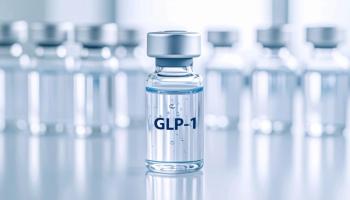
Epitnezumab Shows Promise Treating Chronic Migraines
Treatment with eptinezumab resulted in an average reduction of 8.2 monthly migraine days.
Alder Pharmaceuticals announced that the results from the phase 3 PROMISE 2 study on epitnezumab, an investigational therapy for chronic migraine, which has met the primary endpoint with highly statistical significance compared to placebo.
In addition to the primary endpoint being met, resulting in an average reduction of 8.2 monthly migraine days from baseline compared to 5.6 days with placebo (P <.0001), eptinezumab also met all key secondary endpoints with statistical significance.
“These clinically significant data clearly demonstrate that eptinezumab delivered by infusion provided rapid, effective and sustained migraine relief,” Randall C. Schatzman, PhD, the president and CEO of Alder, said in a
Rapid response was shown in more than half of the patients, with 52% showing migraine reduction by the first day following infusion compared to 27% with placebo (P <.0001). These rapid responders are one of the best outcomes of the therapy, Richard B. Lipton, MD, director of the Montefiore Headache Center and the Edwin S. Lowe professor and vice chair of neurology at Albert Einstein College of Medicine in the Bronx, New York, told MD Magazine following the publication of PROMISE 1, the first phase 3 trial of the Alder product.
PROMISE 2, the randomized, double-blind, placebo-controlled global trial involved 1072 patients with an average of 16.1 migraine days per month. Patients were randomized to either 300 mg or 100 mg eptinezumab or placebo to be administered every 12 weeks.
From months 1 through 3, 61% of patients in the eptinezumab group achieved a reduction in migraine days of 50% or more compared to 39% with placebo (P <.0001), while 33% of eptinezumab patients experienced a 75% or greater reduction in migraine days, compared to 15% with placebo (P <.0001).
A 100% response rate, equally a total elimination of migraine days, was achieved by 15% of patients on eptinezumab compared to 5% for the placebo group (P <.0001).
“We used to say the goal of preventive therapy was to reduce treatment by 50% or more. If we get a 50% reduction, that’s huge,” Lipton said. “If somebody [is] having 20 headache days a month, they get 10 days a month back. That is a big deal. For eptinezumab, they are looking at 75% responder rates—and there are some people that got the drug who had their headaches completely or nearly completely eliminated. There are super responders to this class of medication, and that is quite exciting.”
Overall, the safety profile of the therapy was consistent with previous trials on the therapy, and were similar to the placebo-treated patients. The most commonly reported adverse events were nasopharyngitis (6.3%), upper respiratory infection (4.0%), nausea (3.4%), urinary tract infection (3.1%), arthralgia (joint pain) (2.3 percent), dizziness (2.6 percent), anxiety (2.0 percent) and fatigue (2.0 percent). Upon the completion of PROMISE 2, full safety data will be provided.
Alder is planning on submitting a BLA for eptinezumab to the US Food and Drug Administration in the second half of 2018. It could become the first migraine prevention infusion therapy with all of the treatment dose available upon administration, according to Alder.
“These results represent an important part of the significant step forward that patients who suffer from migraine, many of whom have been living with the disease for decades with limited relief, are about to experience,” said Peter Goadsby, MD, PhD, DSc, a neurologist and headache specialist at the University of California, San Francisco Medical Center, said in a statement. “The new data demonstrate that eptinezumab administered via infusion delivers rapid onset and sustained benefit following one administration. Rapid onset of effect is a true paradigm shift in migraine preventive treatment. I’m excited about the potential for my patients to experience early and meaningful periods of migraine freedom if new treatments become approved.”
This article was originally published by
Newsletter
Stay informed on drug updates, treatment guidelines, and pharmacy practice trends—subscribe to Pharmacy Times for weekly clinical insights.

















































































































































































































